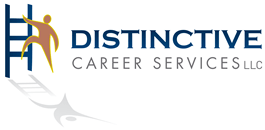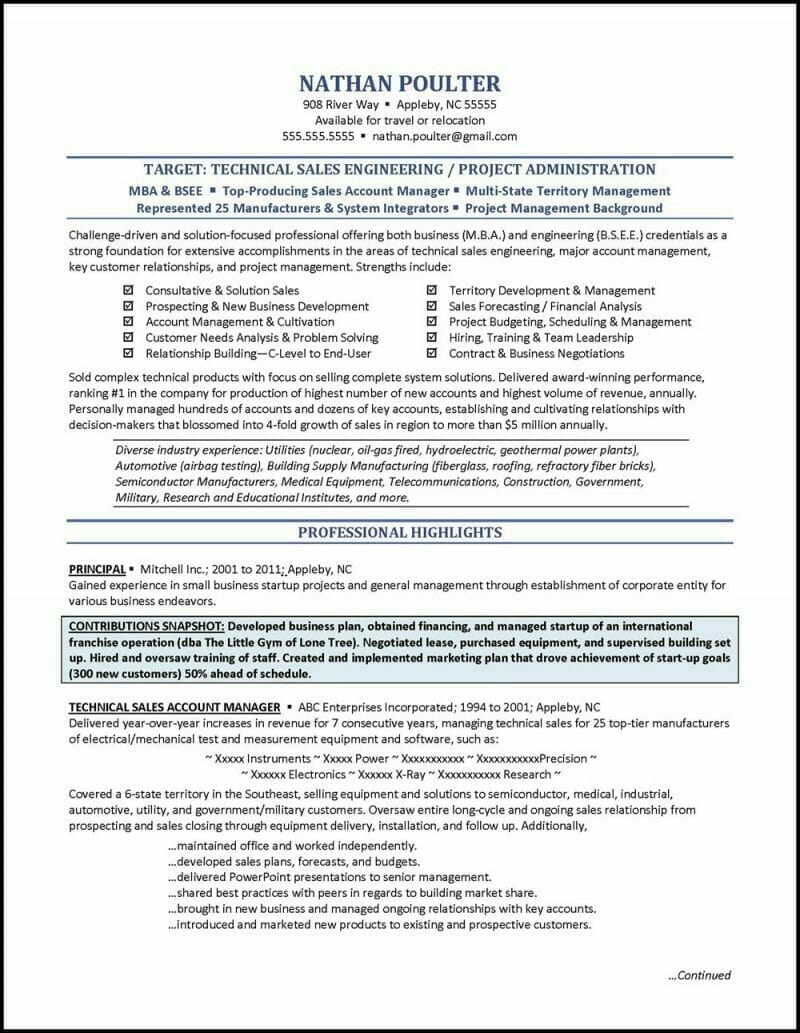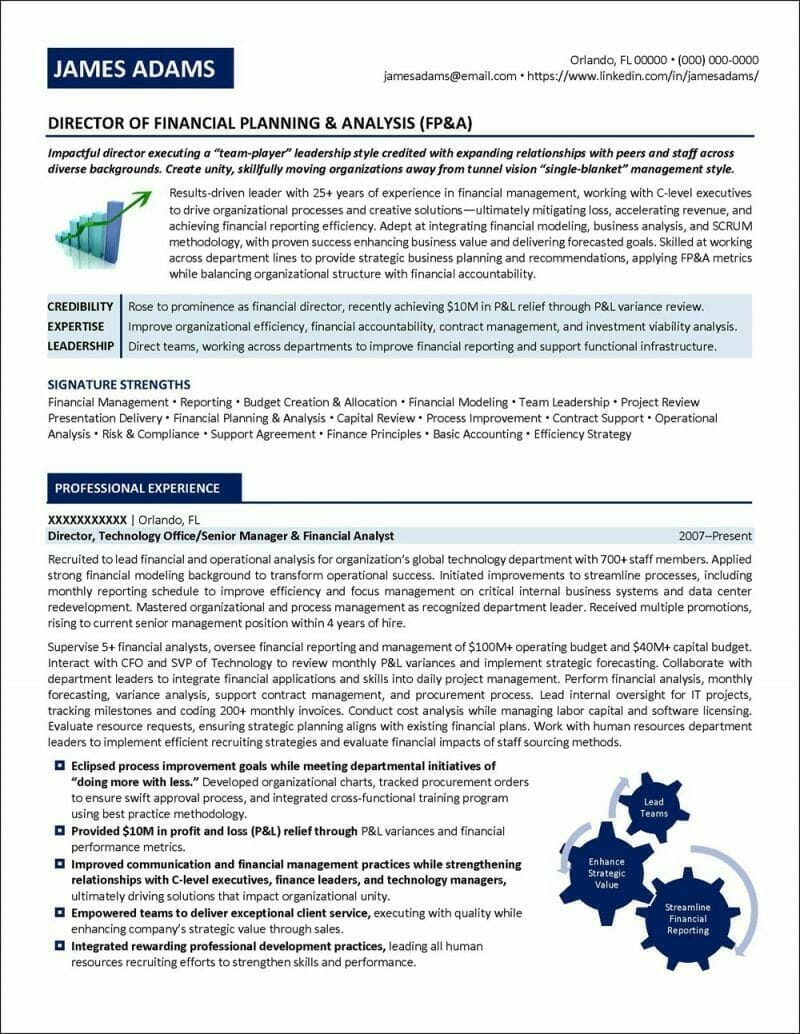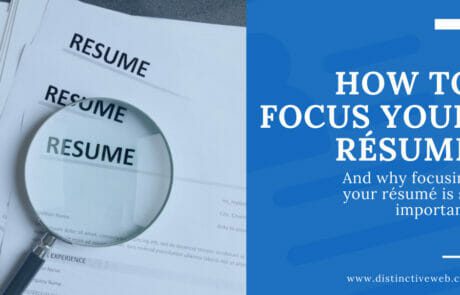
How do you select the best resume format for your needs?
We often get calls from prospective clients who tell us that they want their resume written in a particular format. Usually, this is because they’ve seen and admired the resume of a friend and they want their resume formatted in the same way.
The problem, of course, is that there is no one perfect resume format, and not every resume format is good for every situation.
In fact, choosing the wrong resume format can bring your job search to a screeching halt. On the other hand, the right resume format and proper resume layout will help you stand out and win interviews, by emphasizing all your best qualifications while downplaying any negatives.
If you have reviewed the example resumes in our portfolio, you probably noticed very quickly that each example is in a different format and is very personalized. There doesn’t seem to be a “typical” resume format. In fact, it appears that there are many distinct resume formats.
You are correct in your recognition that each professionally written resume is personalized and unique. In other words, the perfect resume format for you is not likely to be the perfect resume format for your spouse, friend, or coworker.
Our resume writing team takes great care to tailor each resume they create to highlight the unique skills, qualifications, and accomplishments of the individual. In this sense, they must be personalized, and just because one resume utilizes a particular heading and layout, does not mean that the next will.
However, if you study those example resumes carefully, with an eye toward format, underlying these layouts are two distinct types of resumes written in three distinct formats. Deciding which is the perfect resume format for you is not difficult if you understand the advantages and disadvantages of each. The following guidelines will help you make your choice.
Choose Your Resume Format: Step 1
Targeted Resume
Often viewed as one of the most useful and effective resume formats, a targeted resume is used to focus your job search toward a specific career objective, performed in a specific industry, and for a specific company. The content is written to highlight the skills, qualifications, and experience that match the requirements of your job target. You may want to consider writing a targeted resume when:
- You know the title of the position you are interested in and have a good idea of the qualifications that will be required for entry into this position.
- You are applying in response to an employment advertisement.
- You are applying to a specific company.
- You have several different specific career objectives and want a different resume for each one.

This resume example for a senior finance director is a good example of a targeted resume. The client had a particular position that she wanted to target and this resume was written and formatted to call out those qualifications that would be relevant for that position.
Inventory Resume
If you have only a general objective (e.g, an accounting management position but are open to a number of industries) and don’t want to limit yourself to a specific job title, an inventory resume may be your best choice.
Likewise, if you want to be able to use the same resume to apply to a number of companies, the best resume format for you may be the inventory style.
This type of resume is designed to highlight your skills, qualifications, and achievements in a more general manner. Understand, however, that you must have SOME objective, for example, “a management level position in sales.” In this case, you know that you are interested in sales management but you are more open in regard to the industry.
Once you have a clear idea of your general objective you can focus the content of your inventory resume by deciding on 4-6 key skills and abilities that you possess, that are relevant to your general objective, and that will be of value to an employer in this field.
The content of your resume should highlight these skills by demonstrating them through statements of relevant accomplishments and achievements.
If you are conducting an extensive job search campaign, the inventory format is your most efficient choice and in most cases, you are still able to target specific companies and job openings by writing a tailored cover letter to send with your resume.
Also, keep in mind that if you have more than one unrelated career objective, you should write a separate inventory resume (also known as a targeted resume) for each of these.

This resume that was written for a CEO is an example of an inventory resume format. Although he was clear about the position he was targeting — another CEO role — he had experience across a diverse range of industries and he was open to using his expertise to work in one of them again. Thus, while we emphasized all his core executive skills that were transferable, we also called out his experience in each of the industries of interest. You can learn more about this example CEO resume and see the whole document in our portfolio.
Choose Your Resume Format: Step 2
The Chronological Resume Format
The chronological resume format is designed to highlight progressive career growth and advancement. It is easy to read and can be quickly scanned for employment history. For these reasons, it is the most accepted format among hiring authorities. In fact, many even prefer and/or expect it.
The chronological resume format is most suitable when:
- You have a steady and consistent employment history with no major gaps in employment and have not changed career tracks recently.
- Your employment history has been one of progressively responsible positions.
- Your titles have been impressive and/or you have been recently employed at well-known companies.
- Your major accomplishments have been achieved in your most recent positions.
- You are seeking a career in a field where this format is expected.
However, this is where things get a bit confusing. Strictly defined, the chronological resume format jumps immediately into the career chronology as the first section of your resume. Several decades ago, many resumes were structured like this. But, resume writing trends and best practices change. It is rare to see a pure chronological resume and in the 25+ years that we have been writing resumes for Distinctive Career Services‘ clients, I can’t think of a single time we have written a pure chronological resume.
I’ll explain more in a moment. For now, just know that a resume that has a reverse-chronological listing of employment experience included as a primary section of the resume is what most people know to be a chronological format resume.
The Functional Resume Format
The functional resume format highlights key skills, accomplishments, and qualifications at the top, regardless of where they have occurred in your career. Your employment history is de-emphasized by placing it toward the bottom and by documenting a simple listing rather than details of each position. In this way, the functional format firmly places the focus on what you have done rather than where or when you did it.

Unfortunately, many hiring authorities don’t like this format, as it is generally believed that the functional format is used to hide some deficiency in your career history. Despite this, the functional format can be very effective when:
- Most of your achievements and accomplishments occurred in a past position.
- You have recently graduated from high school or college.
- You have been out of the job market for some time and are trying to re-enter.
- You are an older worker and want to de-emphasize age.
- You have held a variety of unconnected positions.
- You are changing career tracks.
- You are returning to a previous line of work.
We rarely write a functionally formatted resume, but there are situations when they are best.
This example administrative assistant resume is an example of a “pure” functional resume. This would be the recommended format only in very rare situations as there are no dates on the employment history. All the emphasis is on the skills this job candidate offered. This resume would not be accepted by most recruiters and it would be rejected by ATS systems. For those reasons, a format like this is really only effective when you are job searching in person and using networking as your primary job searching technique.
The Combination Resume Format
One of the more modern, newest resume formats, the combination resume format combines the benefits of both the chronological and the functional formats. By beginning with a summary (functional format) of your most impressive qualifications, skills, abilities, and accomplishments, it immediately places the emphasis where you want it. This is followed by an employment history section, written in the chronological format, that supports the statements made in your summary.
The combination format is well accepted by hiring authorities and you should consider using it when:
- You have a steady and progressive employment history.
- You are applying for a position for which a chronological resume is expected but you also want to highlight qualifications from earlier positions.
- You are writing a targeted resume and need an effective way to match your skills to the job requirements.
Most of the examples in our portfolio are of resumes formatted in the combination format. Here are a few examples (click on the image to learn more about each)
Resume Formats – Final Considerations: Step 3
Now that you have chosen your style and format, you are ready to write your resume content. Before you do this, consider the following:
First, remember that even more important than the format you choose, is the content and how it is arranged. With only 15 seconds or less to capture the attention of a reader, it is essential that you arrange your content so that the most important and impressive information is in the top third of the document. This is easily accomplished by using a “Resume Summary” or “Qualification Highlights” heading at the very top.
Second, be certain that your resume has a focus. An employer must be able to look at it and immediately discern the logical principle holding it together. This too, is easily accomplished if you keep your objective in mind the entire time you write. You may explicitly state your objective in a separate headline section or you may prefer to state it implicitly, through the organization and content. Either way, be certain that you know what your focus is and that you communicate this clearly.
Finally, stay away from boring descriptions of your job responsibilities. Instead, whenever possible, write concise statements that describe specific examples of accomplishments and achievements. Tell employers how you will be of value to them by describing how you have been of value to previous employers. Examples of accomplishments to include would be how you have saved money, increased profits, improved productivity, or enhanced services. Whenever you can, include actual dollar figures and percentages.
And remember, you don’t need to go it alone! Reach out to us today to learn how the Distinctive Resume Services resume writing team can help you write a job-winning resume!
This article was originally published on this blog in 1997. It was updated in 2010 and was most recently updated again on July 11, 2022.
Frequently Asked Questions
What is a resume format?
A resume format is the layout and organization of your resume. It determines how your information is presented to potential employers. There are different types of resume formats, each suited to different situations and job applications.
How do I choose the best resume format?
The best resume format for you depends on your career history, your objectives, and the job you’re applying for. You might choose a targeted resume if you’re applying for a specific job, an inventory resume if you’re open to various industries, or a combination of both.
What is a targeted resume?
A targeted resume is a type of resume format that focuses on a specific career objective, industry, or company. It highlights the skills, qualifications, and experiences that match the requirements of your job target.
What is an inventory resume?
An inventory resume is a format that highlights your skills, qualifications, and achievements in a general manner. It’s useful if you have a general career objective and want to apply to a number of companies.
What is a chronological resume format?
A chronological resume format highlights your career progression. It’s easy to read and can be quickly scanned for employment history. It’s most suitable when you have a steady and consistent employment history with no major gaps.
What is a functional resume format?
A functional resume format emphasizes your key skills, accomplishments, and qualifications, regardless of when they occurred in your career. Your employment history is de-emphasized, making this format useful if you’re changing career tracks or have held a variety of unconnected positions.
What is a combination resume format?
A combination resume format combines the benefits of both the chronological and the functional formats. It starts with a summary of your most impressive qualifications, followed by an employment history section that supports the statements made in your summary.
How can I make my resume stand out?
To make your resume stand out, focus on highlighting your accomplishments and achievements. Use specific examples and include actual dollar figures and percentages whenever possible. Also, ensure the most important information is in the top third of the document.












